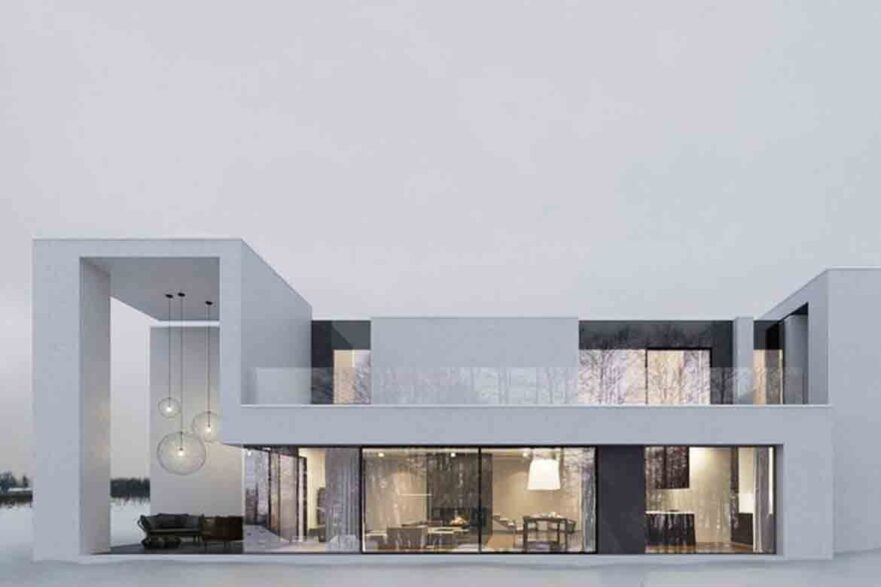
The Art of Minimalist Architecture: Less Is More
The Art of Minimalist Architecture: Less Is More
Minimalist architecture has become a timeless design philosophy that resonates with the modern era’s craving for simplicity and functionality. Rooted in the mantra “less is more,” this design approach emphasizes clean lines, uncluttered spaces, and a harmonious relationship between functionality and aesthetics. In this blog, we’ll explore the art of minimalist architecture, its principles, benefits, and why it’s becoming a cornerstone in sustainable design.
What Is Minimalist Architecture?
Minimalist architecture is a design philosophy that strips down structures to their most essential elements. It avoids excessive ornamentation and prioritizes purpose, creating spaces that feel open, serene, and functional. This style often incorporates natural light, neutral color palettes, and high-quality materials to achieve a seamless, understated elegance.
Core Principles of Minimalist Architecture
1. Form Follows Function
At its heart, minimalist architecture ensures that every element serves a purpose. Decorative elements are avoided unless they add functionality or structural value.
2. Clarity and Simplicity
Designs emphasize clean lines, geometric shapes, and balanced proportions. Spaces are carefully curated to eliminate visual noise.
3. Natural Materials
The use of materials like wood, stone, and glass adds warmth and character while blending with the environment.
4. Neutral Color Palettes
Minimalist designs often incorporate whites, greys, and earthy tones to create a calming, timeless aesthetic.
5. Maximizing Light and Space
Large windows, open floor plans, and the thoughtful use of natural light create an airy, expansive feel.
Why “Less Is More” in Modern Design
The mantra “less is more,” popularized by architect Ludwig Mies van der Rohe, encapsulates the minimalist ethos. Here’s why this philosophy is gaining momentum:
•Sustainability: Minimalist designs use fewer materials and prioritize energy efficiency, making them eco-friendly and cost-effective.
•Mental Clarity: Clutter-free spaces promote calmness, focus, and productivity, aligning with wellness trends.
•Timeless Appeal: Unlike trend-based designs, minimalist architecture stands the test of time, offering enduring value.
Benefits of Minimalist Architecture
1. Eco-Friendly Design
Minimalist architecture often overlaps with sustainable practices. From energy-efficient layouts to the use of eco-conscious materials, this style reduces environmental impact.
2. Cost Efficiency
With fewer decorative elements and a focus on functionality, minimalist structures are often more budget-friendly in both construction and maintenance.
3. Customizability
The simplicity of minimalist spaces makes them a versatile canvas for personalization, whether through furniture, art, or subtle design accents.
Minimalist Architecture and Sustainable Design
At Grey to Green, we believe that minimalist architecture aligns perfectly with sustainable living. By reducing material waste and promoting energy efficiency, minimalist designs not only look good but also contribute to a greener future.
Features like solar panels, rainwater harvesting systems, and green roofs can be seamlessly integrated into minimalist structures, reinforcing the “less is more” philosophy.
Examples of Minimalist Architecture
1. The Farnsworth House (USA)
Designed by Ludwig Mies van der Rohe, this glass-and-steel structure epitomizes simplicity and harmony with nature.
2. Tadao Ando’s Church of the Light (Japan)
This iconic structure uses concrete and light to create a deeply spiritual and minimalist environment.
3. Scandinavian Minimalism
Countries like Sweden and Denmark showcase minimalist homes with a focus on natural light, neutral tones, and functional spaces.
How to Incorporate Minimalism in Your Space
1.Declutter Regularly: Start by removing unnecessary items to create an open and breathable space.
2.Focus on Quality Over Quantity: Invest in fewer, high-quality pieces of furniture and decor.
3.Maximize Natural Light: Use sheer curtains or open layouts to bring in more sunlight.
4.Stick to a Neutral Palette: Whites, greys, and earthy tones create a soothing atmosphere.
Why Choose Grey to Green for Minimalist Designs?
At Grey to Green, we specialize in designing spaces that blend minimalist principles with sustainable innovation. Whether it’s a modern home or a commercial project, our team ensures that your space is functional, eco-friendly, and timelessly elegant.
Minimalist architecture proves that less truly is more. It’s not just about aesthetics—it’s a lifestyle that promotes sustainability, functionality, and mental clarity. Ready to transform your space into a masterpiece of minimalist design? Contact Grey to Green today and discover how we can bring your vision to life.
Tags: Minimalist Architecture, Sustainable Design, Less Is More, Modern Design Trends, Eco-Friendly Architecture, Minimalist Home Ideas, Grey to Green Design




